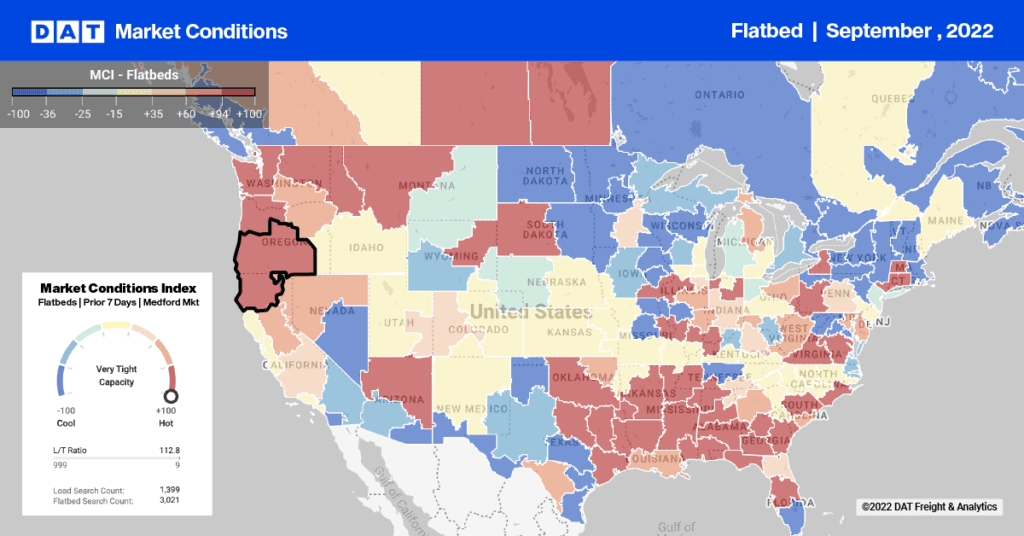Freight rates are not rising as fast as they usually do at this time of year, and freight brokers are calling me every day to ask whether rates are going to remain low or if the upward trend is just delayed.
(Note: If you’re looking for vans in the Southeastern U.S. right now, or you need flatbeds in Houston, rates are already surging and you are too busy to call me. Of course, you’re probably too busy to read a blog post, too, so just carry on!)
I moniitor the nation’s highest-volume lanes in DAT RateView at least once a week throughout the year, and I think today’s atypically low rates — except as noted above — represent a temporary lull. Bad weather in the Upper Midwest, including heavy rain, flooding and even some late snowstorms, are forcing shippers to postpone normal freight movements until later in the season. When the weather finally changes for the better, rates will respond to increased demand. I expect rates to be significantly higher by the middle of May, for all equipment types.
You would expect the brokers to be happy at the prospect of a surge in demand for freight services, but they sound glum on the phone, maybe even fearful, as if I were telling them to schedule a root canal.
What are they thinking?
For one thing, they are concerned that a rapid rate increase will put them in a tough negotiating position with carriers, and also with their shipper customers. Carriers will ask for a higher rate, and it will be hard to get trucks at the price shippers are willing to pay. Until they can persuade their customers to recognize and respond to the new market conditions, some brokers will go ahead and pay what is needed to secure the right trucks. That means they could lose some margin points in the process.
Another possibility is that shippers won’t raise their rates and brokers won’t be able to secure trucks at the old price. Then the broker misses out on a service opportunity and puts his relationship with the customer at risk. Whatever the broker decides, margins and profits will be affected, as will commissions for sales reps and agents, for the weeks or months of transitioning to a new pricing matrix.
As I have said before, I tend to look on the bright side, and there are a lot of positives here. Rates typically rise because the market is expanding, either seasonally or because of an overall uplift in the economy. That means there is more freight, and more opportunity to do what you do best. There may also be localized truck shortages, particularly for equipment types that are in high seasonal demand. That makes the broker’s life more difficult, but it also reinforces the value of brokerage services to the shipper, who really does not have the manpower to call numerous owner-operators and small fleets searching for the right truck.
Even this temporary lull can be put to good use. Brokers can enjoy the relatively low rates and gear up for the busy times ahead. It won’t be long now.
Are rates trending up in your lanes now? How do you maintain margins when rates increase suddenly or rapidly?



